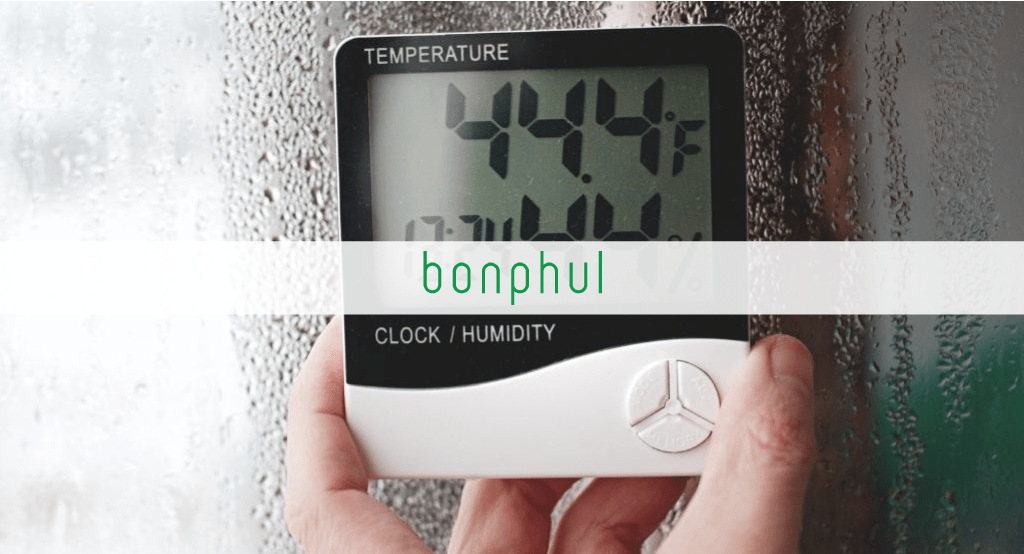
Too high or too low moisture level in the air inside a building can be a major factor of indoor air quality (IAQ). This imbalance can lead to germs and mould spore emissions, causing discomfort to people living indoors. These are major contributors to stale air. Humidity levels indoors keep shifting depending upon the outdoor climate and the thermal settings inside the building. Relative humidity, expressed as a percentage, indicates a present state of absolute humidity relative to a maximum humidity given the same temperature.
High Humidity in Indoor Air
In tropical climatic conditions, high level of moisture in the air is a major cause of building damage, that also affects the health of the occupants. Again, buildings suffering from water leakage due to lack of maintenance and poor designing and implementation can seriously damage the building structure. This may degrade the overall IAQ of the building.
High humidity level indoors can be a result of several factors:
- An inflow of moisture-rich air from outdoors (during hot and humid weathers)
- Rainwater or groundwater finding passage inside the building through cracks and leaks
- Improper plumbing that causes water to leak out to the walls, and floors
- Poorly vented moisture rich spaces like baths, washrooms, kitchens, indoor swimming pools, spas, aquarium
The build-up of high moisture in indoor air can condense inside the building or on materials in the space itself (e.g. ceilings, walls, furniture, cold-water pipes or air-conditioning air supply diffusers). This creates a potential breeding space for moulds and microorganisms that grow on components in humid locations. Microbial contamination and exposure to mould spores can lead to a list of alleged symptoms that generally consists of upper respiratory complaints, including headache, eye irritation, epistaxis (nosebleed), nasal and sinus congestion, cough, cold and flu symptoms, as well as gastrointestinal complaints.
Dry Air
According to the Environmental Protection Agency, a building should maintain a humidity level between 30% and 60%. The drop in humidity level in the air results into dry air (very less or no water molecules in the air composition). The low temperature outside and cold and dry air entering indoors, either through traditional ventilation like – open windows, ventilators, doors – or through cracks and leaks in the building envelope, can bring down the optimal humidity level indoors. The colder the air is, the more it contracts and the fewer particles of moisture it holds. Again, extreme heat can also reduce moisture in the air. Heat makes air expand and normally allows it to hold more moisture. But in a hot climate with little rain, like a desert, moisture in the air quickly evaporates.
An HVAC system inside can also result in dry air. Central heating or air conditioning systems reduce moisture level, making the air drier. The problem with lessor no humidity in the air can also be uncomfortable for the occupants. Dry air can make it easier for bacteria, viruses and allergens to spread and get into the body.
The human respiratory system, that includes nasal passages, throat and lungs, is coated with a fluid like moist membranes that act as a shield from airborne irritants. These membranes capture dirt, dust, viruses and bacteria before they reach the lungs. When these membranes lose too much moisture to dry air, their ability to capture particles is compromised. Dry air can thin out the membrane which can cause swollen, irritated or infected throat and lungs.
The combination of cold temperatures and dry indoor air can have the following effects
- Coughing, wheezing and runny nose
- Dry or sore throat, nosebleeds and dry, flaky skin
- Feeling congested, thirsty or tired
- Increased asthma symptoms, as cold air is an asthma trigger
These symptoms are also common with allergies, colds and the flu, so dry air may not always be the cause. However, these health problems mostly appear when the weather cools down, be it due to weather change or due to indoor cooling systems.





